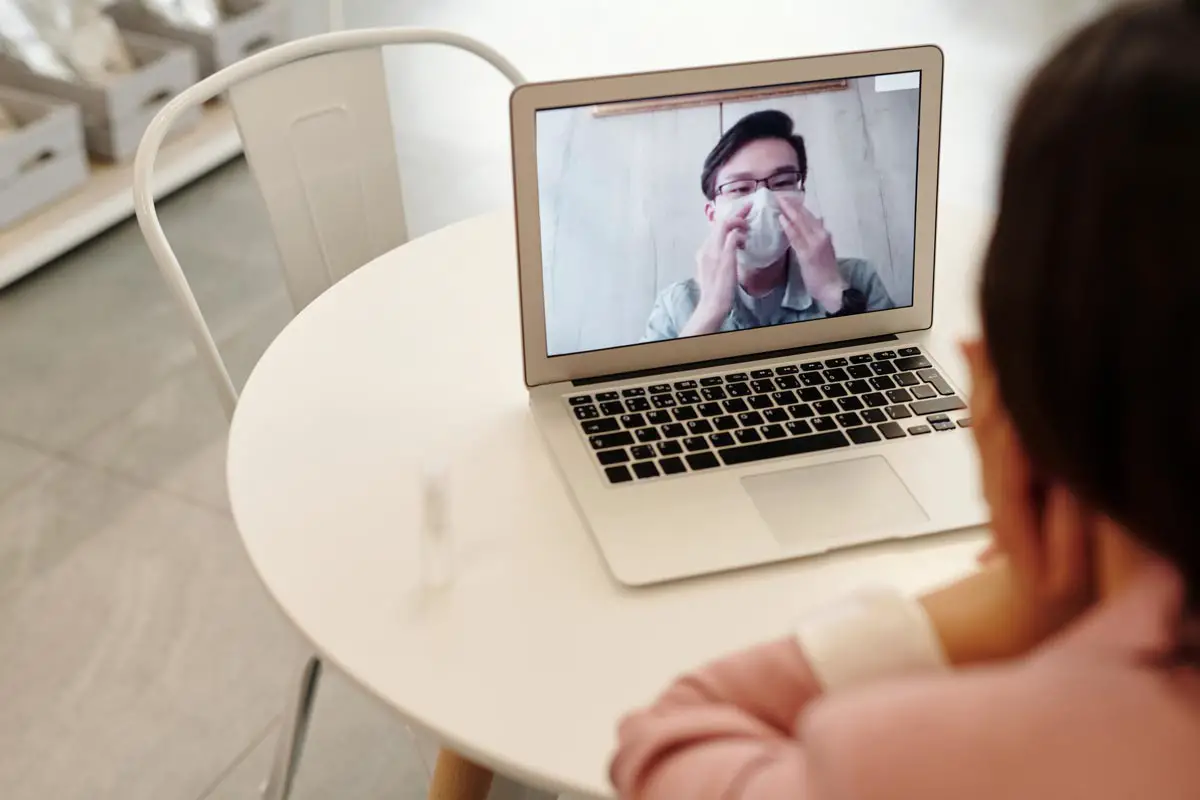As the coronavirus continues disrupting the world, the healthcare industry is at the center of the outbreak. Hospitals are running out of resources, and the number of cases is increasing. COVID-19 is also affecting doctors and healthcare providers who don’t specialize in infectious diseases. However, telemedicine is bridging the gap.
Local and state governments are enforcing strict quarantines and encouraging social distancing as the pandemic spreads. These lockdowns mean many people won’t receive the help they need, whether it’s something minor or potentially more harmful. Telemedicine lets doctors and caregivers be more accessible to patients. However, along with the benefits, issues emerge.
Telemedicine in the coronavirus era
Telemedicine is not a new idea, but the pandemic is creating a renewed urgency around its integration. Telehealth allows healthcare providers to contact patients no matter where they are. Each party can send information back and forth through various apps and services. They can also use audio and visual capabilities to call and video chat.
State governments across the U.S. are greenlighting the use of telemedicine so that patients can adhere to social distancing protocols while still receiving treatment for any issues they may have. Now, the demand for healthcare services through telemedicine is overwhelming.
The rapid progression of the coronavirus is leading governments to make immediate and unanimous decisions to expand the services and qualifications for telehealth. California, Michigan, Texas, and Washington, D.C., are some of the many areas pushing this technology forward. Some states are meeting demands to make pricing on-par with regular in-office visits, which supports caregivers’ jobs. Other regions are lowering the restrictions and qualifications for telehealth consultations.
The Trump Administration announced an expansion of benefits from the Centers for Medicare & Medicaid Services (CMS) for fulfilling needs for telehealth. Over 140 million Americans receive coverage through CMS, especially those with disabilities, the elderly, and those in low-income brackets. With this expansion, more people can receive care digitally.
Video or audio calls can include any health issues, such as physical and mental health, family therapy, substance abuse, behavioral health and more. Several advantages come from telehealth coverage of this caliber. It’s crucial, though, that healthcare providers continue receiving the resources and support they need to avoid putting more pressure on the medical infrastructure.
Why telemedicine helps
Telemedicine improves connectivity between doctors and patients during a time when social distancing, isolation and quarantines are mandatory. It can help with two different types of patients. First, those who have COVID-19, depending on the degree of infection, will need telehealth services. Secondly, those who have other needs with doctors who don’t specialize in treating the coronavirus will require contact methods.
You’ve probably heard about how the range and severity of COVID-19 cases can fluctuate. Some experience mild, flu-like symptoms. Others endure more invasive instances where the virus can turn to pneumonia in the lungs. Those who need urgent treatment go to the hospital. Those with mild symptoms, however, are being told to treat it at home like it’s the flu — while self-isolating.
This latter form of treatment prevents the virus from spreading. However, patients and doctors may want to check in during the recovery process. Telemedicine allows that connection. This way, doctors can monitor mild cases from a distance while tending to more severe ones in-person.
During this pandemic, other medical issues and needs will not come to a halt — individuals will still require care. Technology is a powerful tool, and it can cover any range of health issues patients may have. Mental health, for instance, is an area of concern — quarantining away from loved ones or resources can have detrimental effects. The stay-at-home orders affect family dynamics within many households, too, and may bring attention to a need for professional medical assistance.
The connections between telehealth and its users will help caregivers maintain their practices while patients receive care. While the expansion of CMS benefits helps Americans receive care through telemedicine, it exposes an underlying issue for those without coverage.

The impediments to digital health
Telemedicine will improve caregiving — this is indisputable. The expansion of insurance coverage and benefits will also help millions. But those without coverage will continue to be among the most vulnerable in the population. And doctors who require in-person visits are seeing a dramatic decrease in daily patients.
The number of uninsured Americans increased by 500,000 from 2017 to 2018, totaling 28 million people. Though officials have loosened telehealth qualifications, some restrictions remain. Uninsured individuals may not have access to proper treatment. Though many officials have guaranteed that treatment for COVID-19 is free for all, that is yet to come to fruition.
Additionally, those in low-income brackets may not have smartphones or internet access. This factor will prevent them from receiving assessments or treatments through technological means. Those who do have the necessary resources may not have the money to cover treatment costs. These issues expose a continuous cycle within the medical system.
Those without resources and finances will not receive the treatment or attention they need. They will then continue to live in poverty without aid, which can worsen existing problems. Government officials must ensure that all can receive treatment for COVID-19 or other issues.
The doctors who need to see patients in-person will face trouble during this time as well. Dentists, gynecologists, and other practices will see declines in traffic similar to those of regular businesses that have shut down. Everyone and everything has paused to focus on slowing the virus, but not everyone can afford to. Telehealth won’t be able to provide sufficient business for certain hands-on practices experiencing this pandemic.
Flattening the curve
Experts predict that the road ahead is long. Information comes slowly, and different sources predict contrasting things. The pandemic may experience several phases, where social distancing may have to return later on. Information is still murky, but the overarching theme is to flatten the curve.
You can help by social distancing and using telemedicine for non-severe issues or those not involving the coronavirus. Contact your care provider to see the options they offer. When you opt in to telehealth, you are doing your part to flatten the curve. From here, telemedicine can expand its accessibility and hopefully reduce the virus’s transmission.
What do you think about telemedicine? Have you used it to converse with your doctor or healthcare professional during the pandemic? Let us know in the comments below or on Twitter, Facebook, or MeWe.
Last Updated on February 3, 2021.












Comments are closed.